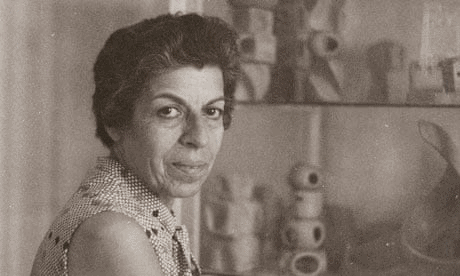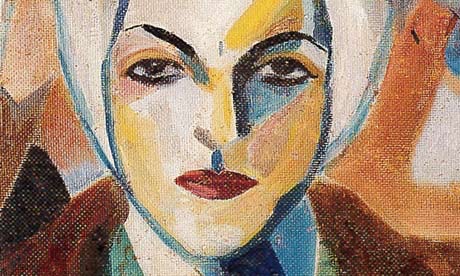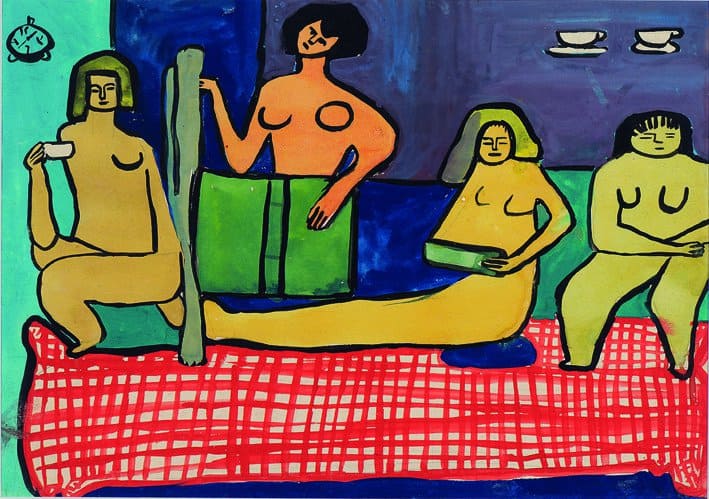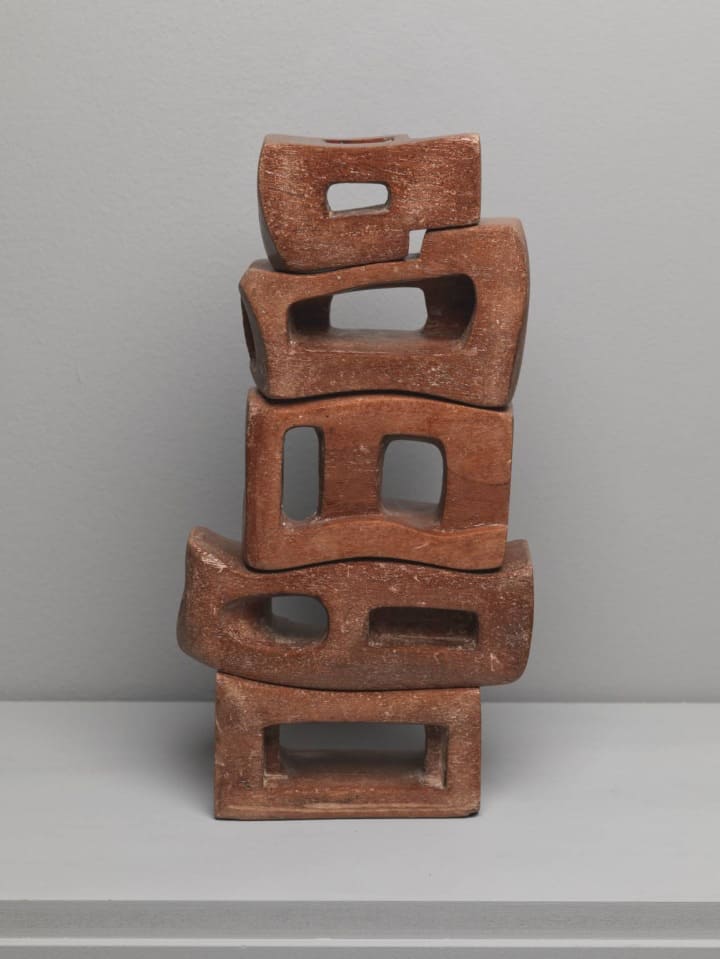Articles and Features
Lost (and Found) Artist Series: Saloua Raouda Choucair

By Shira Wolfe
“The fast communications, the news I hear, the new car models we see every year, don’t these have an influence? This should have an influence on me. A critic once told me that my work has a European influence. No, it’s a universal influence, in fact. What I experience, everyone in the world experiences.” – Saloua Raouda Choucair
Artland’s Lost (and Found) Artist Series focuses on artists who were originally omitted from the mainstream art canon or largely invisible for most of their careers. This week we feature Lebanese artist Saloua Raouda Choucair (1916-2017), a pioneer of abstract art in the Middle East who has only come to receive widespread international attention in the past decade.

Saloua Raouda Choucair – A Strong Female Voice in the Beirut Art Scene
Saloua Raouda Choucair is considered to be one of the first painters and sculptors in Lebanon to work with abstraction. In fact, her 1947 exhibition at Beirut’s Arab Cultural Gallery is often regarded as the first abstract painting exhibition in the Arab world. The artist, who was born in Beirut in 1916, started out painting in a figurative style in the 1940s, in the studios of Lebanese artists such as Moustafa Farroukh and Omar Onsi. However, early in her artistic career, Choucair developed an interest in combining elements of Western abstraction with Islamic aesthetics and architecture, characterised by an experimental approach to materials and her use of modular forms, lines and curves. She set out to prove the relevance of non-representational Middle Eastern design and architecture to modern Western abstraction. Moreover, she stressed the importance of her modern surroundings and the universal influence on her art: “The fast communications, the news I hear, the new car models we see every year, don’t these have an influence? This should have an influence on me. A critic once told me that my work has a European influence. No, it’s a universal influence, in fact. What I experience, everyone in the world experiences.” In Choucair’s 1943 Self-Portrait, which portrays the artist wearing a headscarf with flattened planes on her face and geometric forms throughout the canvas, we can see a work that was already far more advanced than the Post-Impressionism pastiche work of her local teachers. In 1948, Choucair moved to Paris where she studied at the École Nationale Supérieure des Beaux-Arts.

Saloua Raouda Choucair in Paris
Paris had a profound influence on Choucair’s art, not least due to her work in the studio of Fernand Léger in the late ‘40s. His influence on Choucair’s work can be seen in her Les Peintres Célèbres series from that period. These small gouache paintings most likely revisit Léger’s painting Le Grand Déjeuner, which depicts a harem of three naked women drinking tea around a small table. However, in Choucair’s take on this compositional format, she creates scenes in which her women are more human, more empowered, studying from books instead of decorously arranging themselves.

“All the rules that I apply are derived from the Islamic religion and from Islamic geometric design. I toured the streets and mosques of Cairo, and at that time I may have found the vision that I wanted. But nobody had expected that I would go back to using engineering. Nobody expected that. Even I didn’t expect that. I was so happy about that.” – Saloua Raouda Choucair
Influences and Style
Choucair returned from Paris to Lebanon in 1952, where she became a pioneer of abstract art in the region, becoming especially known for her sculptural work. Her sculptures from the 1950s to the 1980s were created in a wide range of materials, from wood and metal to stone and fiberglass, and often resemble architectural structures. Between 1961 and 1986, she exhibited her works at 10 editions of the Salon d’Automne in Beirut. Choucair was interested in the Islamic artistic tradition and natural sciences, fusing Western abstraction with her feel for the organic and the built environment, her interest in materials and scale, and the shapes, forms and poetry of the Islamic tradition. Inspired by the unique stanza style of Sufi poetry, a series of sculptures she did entitled Poems exists in modular form, units of which that can either arranged alone or as a stacked grouping, where they can be read as a greater whole.

Regarding the influences on her art, Choucair explained: “All the rules that I apply are derived from the Islamic religion and from Islamic geometric design. I toured the streets and mosques of Cairo, and at that time I may have found the vision that I wanted. But nobody had expected that I would go back to using engineering. Nobody expected that. Even I didn’t expect that. I was so happy about that.” Choucair wasn’t nostalgic or weary of modern times. She believed in the future and in science, all of which informed her artistic practice.
Recognition and Legacy
In 2013, Choucair was the subject of a major retrospective at Tate Modern, which helped spark more widespread international recognition for her art. According to Jessica Morgan, the co-curator of the exhibition, almost the entire life’s work production of Choucair remained in her Beirut studio because she had barely sold anything during her lifetime. The pieces were a revelation and finally received the international acclaim they deserved. Since the Tate Modern exhibition, Choucair’s work has been featured at institutions including the Palais de Tokyo in Paris, the Whitechapel Gallery in London, and Haus der Kunst in Munich. In 2015, the New York City CRG Gallery organised the very first solo show of Choucair’s work in the United States. Today, Choucair’s works can be found in the collections of London’s Tate Modern, Paris’ Centre Pompidou, the Guggenheim Abu Dhabi, the Sharjah Foundation, Qatar Museums, the Al Qasimi Foundation in the UAE, the Art Institute of Chicago, New York’s Metropolitan Museum of Art, and the Pizzuti Foundation in Ohio. In 2017, Choucair died at the age of 100 in her native Beirut.

Relevant sources to learn more
For previous editions of the Lost (and Found) Artist Series, see: